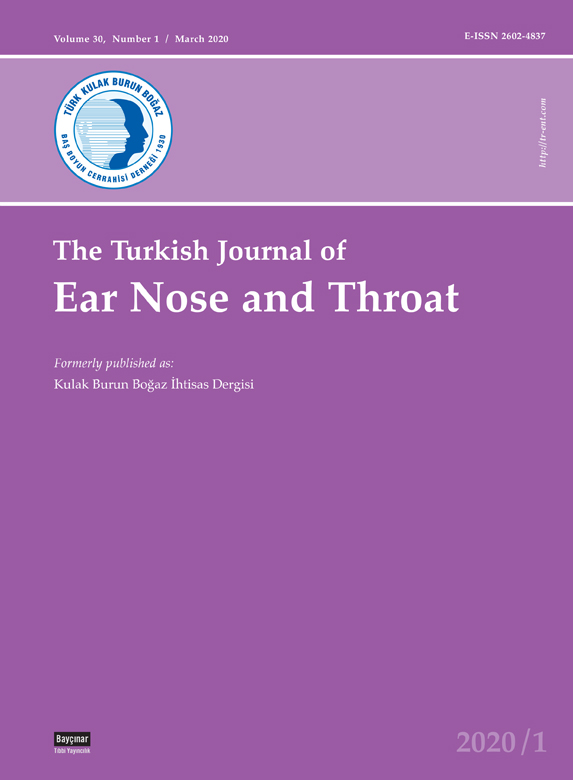
The Turkish Journal of Ear Nose and Throat
Yazarlar: Abdulkadir İmre, Ercan Pınar, Nurullah Yuceer, Murat Songu, Yüksel Olgun, İbrahim Aladağ
Konular:-
DOI:10.5606/kbbihtisas.2015.57255
Anahtar Kelimeler:Onodi cell,Sellar tumor,Transsphenoidal pituitary surgery.
Özet: OBJECTIVE: This study aims to evaluate the association between the presence of Onodi cell and sella exposure during endonasal endoscopic transsphenoidal pituitary surgery (EETPS). METHODS: Forty-two patients who underwent EETPS for a pituitary adenoma with the collaboration of Neurosurgery and Otorhinolaryngology Departments at Katip Çelebi University Atatürk Training and Research Hospital between February 2011 and March 2014 were retrospectively analyzed. Preoperative paranasal sinus tomography and intraoperative findings were evaluated for the presence of Onodi cells. The location of the Onodi cell and its relation with sella exposure during surgery were also assessed. RESULTS: The incidence of Onodi cell was 19%. The Onodi cells were observed in eight of 42 patients on preoperative paranasal sinus computed tomography. The Onodi cells were unilateral in five patients and bilateral in three. Intraoperative findings were correlated with tomographic findings. In seven patients, Onodi cells limited the exposure of sellar floor and the inferior-medial wall of these cells were removed and connected with the sphenoid sinus and the entire sellar floor was exposed. In the remaining one patient, the Onodi cell was smaller and located superolaterally. This cell was not removed, as it did not limited the sellar exposure. CONCLUSION: The Onodi cell may limit the sella exposure during transsphenoidal surgery. Onodi cell should be removed and connected with the sphenoid sinus cavity for the entire sellar floor exposure.